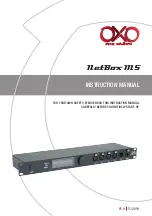
3-24
•
Properly setting the value of Sn-12 (Torque Detection 1 Selection) and Sn-69
(Torque Detection 2 Selection) and will allow
a.
Enable only during frequency agreement. Continue operation even after detection.
b.
Enable only during frequency agreement. Stop operation after detection.
c.
Enable at anytime. Continue operation even after detection.
d.
Enable at anytime. Stop operation after detection.
(30)
Carrier Frequency Setting
(Cn-34)
•
Lower the carrier frequency can decrease the noise interference and leakage
current. Its setting is shown below.
1
2
6*
5
4
3
Carrier frequency(kHz) = 2.5kHz* Cn-34 setting
(2.5 kHz)
(15 kHz)
Carrier frequency
(louder)
(insensible)
Audio noise
Cn-34 =
*factory setting
•
The output frequency does not need to be adjusted, except in the following cases.
a. If the wiring distance between the inverter and motor is long, lower the carrier
frequency as shown below to allow less leakage current.
Wring distance
< 100ft.
100-165ft. 166-328ft.
> 329ft.
Carrier frequency (Cn-34)
<15kHz
<10kHz
<5KHz
<2.5KHz
b. If there is great irregularity in speed or torque, lower the carrier frequency.
(31)
Speed Search Detection Level
(Cn-35)
(32)
Speed Search Time
(Cn-36)
(33)
Min. Baseblock Time
(Cn-37)
(34)
Speed Search V/F Curve
(Cn-38)
•
The speed search function will search the speed of a frequency coasting motor from
the frequency command or max. frequency downward. And it will restart up
smoothly from that frequency or max. frequency. It is effective in situations such as
switching from a commercial power supply to an inverter without tripping
occurred.
•
The timing of speed search function as shown below :
















































